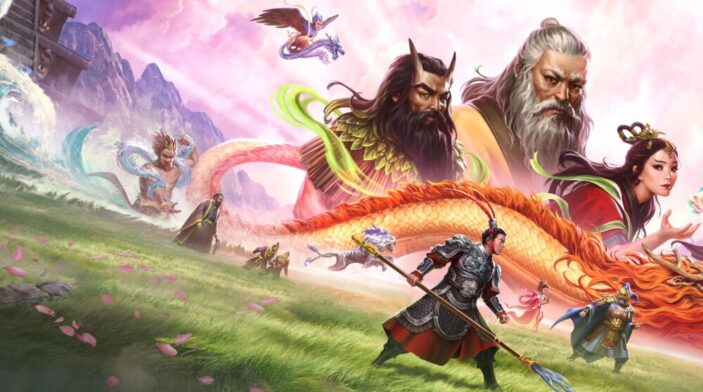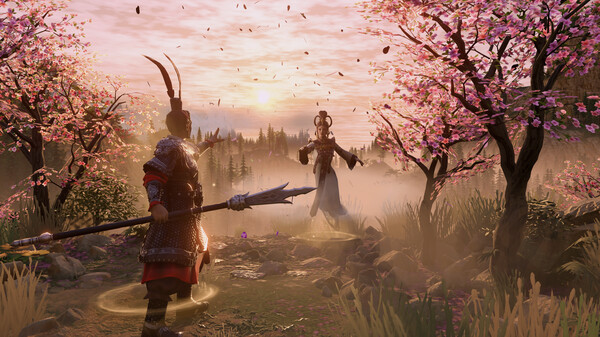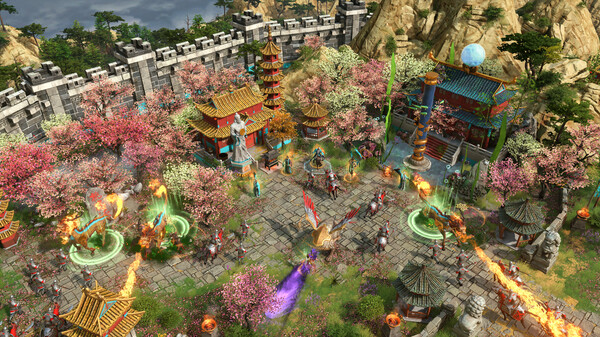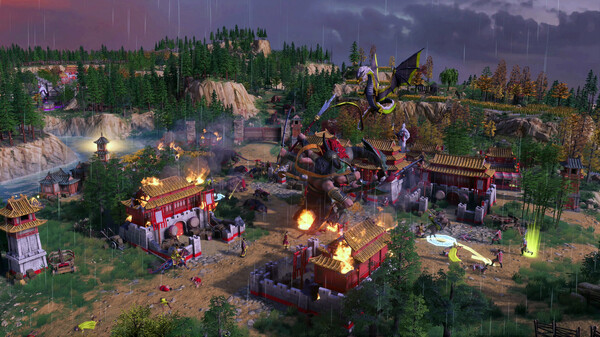
When Age of Mythology: Retold first came out, featuring some of the best hits of the series, there was one notable absence from the classic games, one nation that had been left out. Now, finally, the excluded Chinese pantheon has returned in the Immortal Pillars DLC – and it looks better than ever.
Rather than just putting a fresh coat of paint on the original nation, this DLC has entirely revamped the Chinese pantheon for a new, more engaging experience. The gods may be the same, but everything else is different, from powers to myth units and even the campaign it features. It’s not so different that it feels unfamiliar, but for lovers of the series, these friendly faces are a welcome addition that will spice up this classic game.
Face New Legends
While most of the campaigns in the base Age of Mythology: Retold are essentially revamped versions of those from earlier editions, the Retold Chinese campaign treads completely new ground from its predecessor Tale of the Dragon. Not that you would know if you aren’t familiar with the series – it feels like such a natural inclusion, perfectly matching the style of the other campaigns for a cohesive experience.
For the most part, the new Immortal Pillars story plays out in classic Age of Mythology fashion, with short cutscenes allowing you to get to know our characters before entering into the gameplay, where you will guide them through several different scenarios and test your skills in building armies, expanding villages, and more.

With a story drawn from real Chinese mythology, the new Immortal Pillars campaign concerns three rather disparate heroes banding together to defeat the great warrior Huang Zhaowu, a man once granted immortality by the gods but who now seeks to overthrow them in the hope of meeting his deceased wife again. With the help of the war god Chiyou and a powerful witch, he plans to destroy the very pillars of heaven and shatter reality itself. If you are to have any hope of stopping him, you will need to use all your strategic wit and create powerful allies.
Though the story isn’t anything to write home about, and the voice acting feels stiff at times, it does add enthusiasm and excitement to each action you take. This new campaign also sits alongside the others perfectly. It works just fine and, for the most part, tests you in the same way as the others, with plenty of sub-challenges and different difficulty settings so that you can replay it again and again. It’s satisfying, though a little shorter than the other campaigns. Streamlined, yes, but it may leave you wanting more.
Building Your Empire
In skirmish and PvP gameplay, the Chinese units play out much like their counterparts from other nations. With three major gods Fuxi, Nüwa and Shennong (plus plenty more minor gods) for you to choose from, there is plenty of variation for you to try out and play around with, making different runs feel unique and fresh. One, Fuxi, even comes with a rather unusual approach – a time-based Yin/Yang system, which boosts military units for a short time before switching to boosting resource-gathering.
It’s an innovative, original approach that forces players to strategise and time their current focus in a way not used in the other nations, and in some ways it seems a shame it’s not used for all the Chinese gods.

After all, on the surface level, gameplay with the Chinese units works extremely similarly to the other nations. Normally, some nations feel very different to play – switching to the Egyptian nation after playing with Greek troops certainly feels like a whole new experience – but the Chinese nation carries a little less of this excitement. Alongside standard villagers you can spawn giant kuafu, who are costly but excel at building, mining and collecting wood – reminiscent of the different Norse units and their varying strengths – but for the most part there is little difference to how you would build up your village here to how you would build up a Greek one.
There are some fun new units and some useful skills found in those units that force you to rethink your strategies to gain success – such as the scout unit’s ability to float a lantern past enemy lines and reveal what lies there. It feels easy to control and the units feel responsive, and there are plenty of useful automatic tools like those found in the base game, but there is nothing revolutionary. Nothing that will take new players by surprise. At times, it feels like most of the differences are in appearance and flavour.

There is plenty of flavour; do not get me wrong. The human units each have their look, and a lot of love has been poured into the myth units to create a distinct visual style. I have my doubts that anyone plays Age of Mythology for the art, but it does look great, especially when it comes to the remade art for the gods.
If you’re hoping for something extremely different from the other nations, you might be a little disappointed, but for a casual player (especially one who’s played with the old version and wants to try something new), it presents an opportunity to experiment with a new civilisation.
Final Thoughts
Immortal Pillars is certainly enjoyable to play, and the revamped Chinese civilisation is a breath of fresh air. The campaign is well made, and in skirmishes it has enough assets and costs that it invites experimentation as you test it out against the other nations. Just like the base game, it offers boundless opportunities to strategise and simulate the building of an empire.
If there was one real concern I had, it was the cost. This DLC is worthwhile, but for A$24.95, it is a relatively small amount of content – especially when the Chinese campaign is shorter than some of the others featured there. If you are happy to pay that price, however, I am sure you will have a fun time.
THREE AND A HALF STARS (OUT OF FIVE)
Highlights: Fun new gods and myth units; Well-designed new campaign; Good visuals
Lowlights: Small amount of content overall
Developer: World’s Edge, Virtuos Games, Forgotten Empires, Tantalus Media
Publisher: Xbox Game Studios
Platforms: PlayStation 5, Microsoft Windows, Xbox Series X and Series S
Available: Now
Review was conducted on a Windows PC with a release code provided by the publisher.
